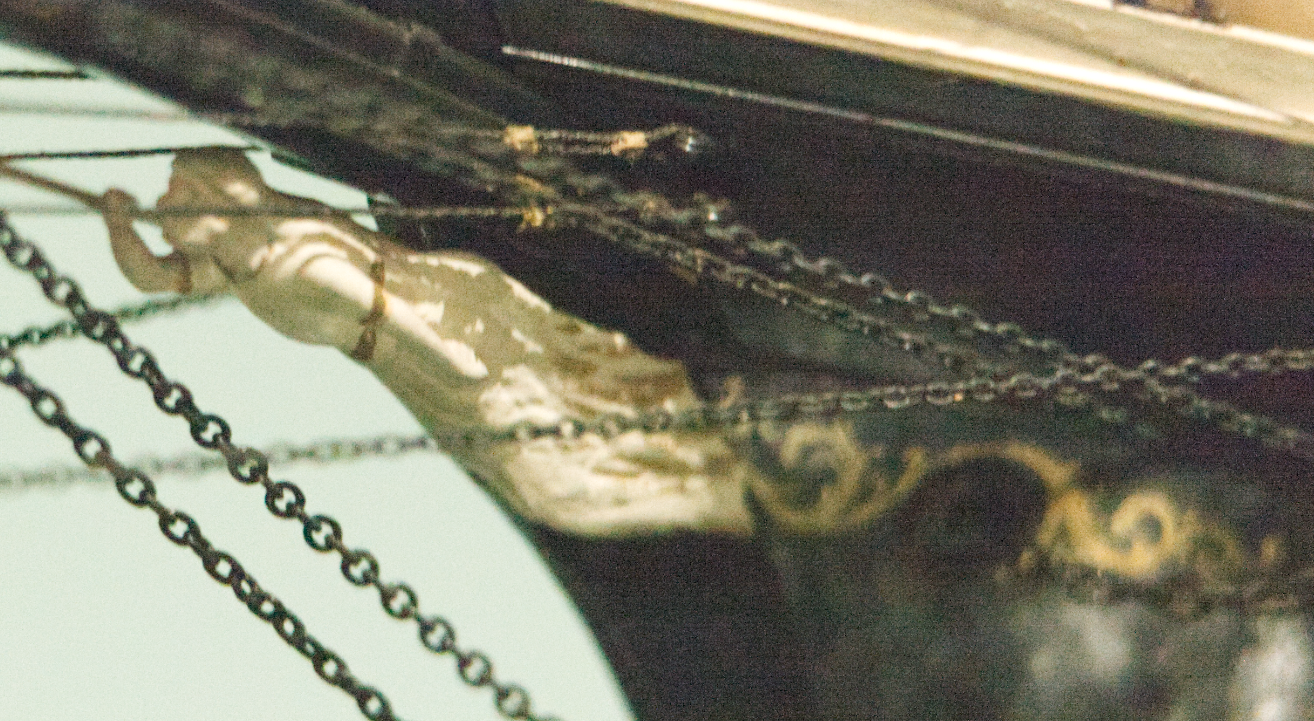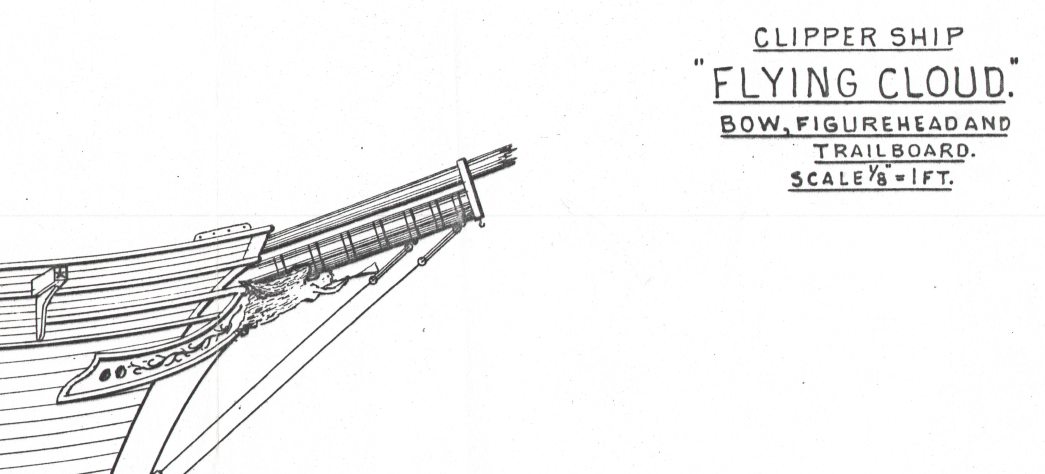
sob
Members-
Posts
93 -
Joined
-
Last visited
Content Type
Profiles
Forums
Gallery
Events
Everything posted by sob
-
my last post got me to take a look at Hall's Scantling for the McKay ships (https://www.sobco.com/ship_model/fc/files/Hall-Models_and_Measurements-1883.pdf and https://www.sobco.com/ship_model/fc/Hall-Flying_Cloud_measurements.html there is no mention of navel hoods for the FC - that does not mean there were none but it clearly does not provide useful info on that front
-
I would not dismiss the plans redrawn in the 1930s as easily as that since there were no actual plans and there were no photos of most of the of the early clippers the people who drew the plans went on what they know about clipper ships (which might not have been much) and whatever they had in their own libraries or libraries they could access - some info was quite good (like the Hall info on the ships), some not so much - but I think that the people who drew these plans had the best of intentions to produce plans as accurate as they could
-
not that it means anything, but this is a (poor) photo from an article written by maybe the best ship model maker that ever lived, Lloyd McCaffery, about his mode of the Flying Cloud - the article describes the research he did and the sources he used - as it turns out he used many of the sources I used, and he also did not implement any navel hoods as described by McLean (note he worked in small scale - at the bottom is a pencil tip and part of a finger)
-
rob asks - "I wonder...wouldn't you have done this earlier....prior to drawing your plan?" as I say on my plans my main guidance in drawing the plans was the Boucher model in the MFA and various plans others had drawn (some directly from that model) along with the McLean description and I had not noted the specific detail in the McLean description about the navel hoods & the figurehead when I did them (a number of years ago)
-
re: naval hood & high hawes hole placement - note that the navel hood can be above or below the hawes hole or both above & below it according to the old definitions also note that multiple of the old definitions say that the navel head is planks up to 10" thick arranged to support the hawes hole so not all that much might have been visible from outside the ship e.g. teel-The_shipwrights_vade-mecum-1805 – p 119 NAVAL-HOODS. Broad pieces of oak, from 6 to 10 inches thick, (according to the size of the ship,) worked afore the hawse-holes on the outside of the ship, and likewise above and below them, in those ship's which have no cheeks to support a bolster; the naval-hoods thus formed answering the same purpose. Jamieson-A_Dictionary_of_Mechanical_Science_Arts-vol 1-1829 P 459 - Naval Hoods, or Whoods, large thick pieces of timber, which encircle the hawse-holes Young-Nautical_Dictionary-1863 P 188 HAWSE-BOX, or HAWSE-PIECES, called also Naval Hoods. Pieces of plank bolted outside round each of the hawse holes to support the projecting part of the hawse-pipe. T. R. Blanckley, Naval Expositor - 1750 Navel Hoods are large Pieces of Stuff fayd against the Hawse Holes, and fills out to the outer Edge of the Cheeks, to keep the Cable from wearing them.
-
this is also for what its worth - this is a picture I took of the 1916 model of the FC by Boucher in the Boston Museum of Fine Arts it is hard to see but it basically conforms to what McLean said (also not, relating to a different discussion, note that the base of the figurehead is quite large and would provide good support without needing a hood over it to help hold it in place) it is hard to see the planksheer but if you follow the line of the main rail it likely hits the figurehead just about where the gold carving that surrounds the Hawes hole hits the figurehead - this model does not show any obvious navel hood which would be behind the carving
-
thanks for the kind words about the web site what I ment by the not sinking from split bow was that the normal copper construction seemed to be adequate in most cases even if McKay had something stronger that helped in out of regular situations sorry if I made you think that a lack of depth of the rail height was an issue, - I was referring to the Mary McKay outline & it did not seem too have enough depth above the shelf where the figurehead was based to support the kind of structure the Glory had I very much appreciate your efforts to educate me (and countless other modelers), but, as a researcher myself, I am not convinced of all of your deductions but please do not take that as any type of insult - its just multiple researchers coming to different conclusions Scott ps - btw - do you go to the Joint Clubs annual meeting in New London? I generally do but had to skip this years meeting
-
Rob sure does good work re: sheer - McLean did not say as for the McKay structures - I will note that a lot of ships were built by people other than McKay and they did not all sink from a split bow and, as for the FC description of a extended navel hood means it "gives no room for either cutwater ..." Scott
-
in Glory the structure extends past the base of the figurehead and extends on top of the figurehead the McLean note on the naval hoods on the FC says ""where the line of the planksheer and the carved work on the navel hoods terminate, she has the full figure of an angel"." that, to me, indicates that the navel hoods do not extend past the base of the figurehead Scott
-
about the "highly inaccurate external wood windless" here again I've not see evidence that the early McKay ships had anything but the wooden windlass - EVERY plan for every ship of the same period had the same windlass of course, in general, those plans were drawn long after the ships were built McLean does not say anything about the FC's windlass but does note that the SG had " a patent windlass, with ends which ungear" that description fits the wooden windlass which has ends that are separate from the body I agree that the crew quarters in topgallant forecastle would need to be taller than the 5' so that some step down as you have described makes a lot of sense as for the WCs - McLean said in its after wings are two water closets - that to me means that the WCs were under the topgallant forecastle deck but not necessarily that they would her been inside the crew space Scott
-
1/ I am not rejecting then structures were I can see them the structure you point to on then Glory is very clear and unlike what I've see on other builder's ships - it is clearly molded to the shape of the bow and would very likely provided the strong support you have described - I am fully with you on that but I am not convinced that ALL of the McKay clippers had exactly the same structures I have not seen evidence that the Flying Cloud had such a structure - McLean's description of the navel hoods on tree FC and SH were that they were so well bolted together that they provided a lot of support to the bow's structure - I can easily see how such a design could have evolved into the structure you point at in the Glory 2/ whatever the structures are I do not think they should be called "Navel Hoods" the concept of navel hoods is a old one (at least to the 1700s) and throughout the history I could find referred to support for the hawse holes the drawing I posted a while back clearly shows that only the structure around the hawse holes was called the navel hoods and that was blended into another structure (e.g. trail-bosrds) that swept up to the figurehead following that logic the stern-most part of the structure point at on the Glory, the part just over the hawse-hole, could be referred to as a navel hood but the rest would not (and note, that many, but not all, of the navel hoods had beams above and below the hawse holes Scott
About us
Modelshipworld - Advancing Ship Modeling through Research
SSL Secured
Your security is important for us so this Website is SSL-Secured
NRG Mailing Address
Nautical Research Guild
237 South Lincoln Street
Westmont IL, 60559-1917
Model Ship World ® and the MSW logo are Registered Trademarks, and belong to the Nautical Research Guild (United States Patent and Trademark Office: No. 6,929,264 & No. 6,929,274, registered Dec. 20, 2022)
Helpful Links
About the NRG
If you enjoy building ship models that are historically accurate as well as beautiful, then The Nautical Research Guild (NRG) is just right for you.
The Guild is a non-profit educational organization whose mission is to “Advance Ship Modeling Through Research”. We provide support to our members in their efforts to raise the quality of their model ships.
The Nautical Research Guild has published our world-renowned quarterly magazine, The Nautical Research Journal, since 1955. The pages of the Journal are full of articles by accomplished ship modelers who show you how they create those exquisite details on their models, and by maritime historians who show you the correct details to build. The Journal is available in both print and digital editions. Go to the NRG web site (www.thenrg.org) to download a complimentary digital copy of the Journal. The NRG also publishes plan sets, books and compilations of back issues of the Journal and the former Ships in Scale and Model Ship Builder magazines.



